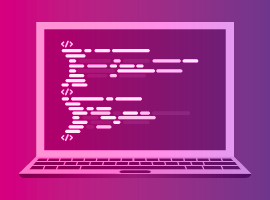Feb
19,
2024
Embedding vectors (or embeddings) play a central role in the challenges of processing and interpretation of unstructured data such as text, images, or audio files. Embeddings take unstructured data and convert it to structured, no matter how complex, so they can be easily processed by software. OpenAI offers such embeddings,...
Feb
2,
2024
Discover the power of address matching in real estate data management with this comprehensive guide. Learn how to leverage natural language processing (NLP) techniques using Python, including open-source libraries like SpaCy and fuzzywuzzy, to parse, clean, and match addresses. From breaking down data silos to geocoding and point-in-polygon searches, this...
Mar
15,
2021
<div style="text-align: justify;">Python has established itself as a quasi-standard in the field of machine learning over the last few years, in part due to the broad availability of libraries. It is logical that Oracle did not really like to watch this trend — after all, Java has to be widely...
Jan
7,
2021
<div style="text-align: justify;">Anomalies - or outliers - are ubiquitous in data. Be it due to measurement errors of sensors, unexpected events in the environment or faulty behaviour of a machine. In many cases, it makes sense to detect such anomalies in real time in order to be able to react...
Dec
16,
2020
<div style="text-align: justify;">Since February, we have been inundated in the media with diagrams and graphics on the spread of the coronavirus. The data comes from freely accessible sources and can be used by everyone. But how do you turn the source data into a data set that can be used...
Feb
11,
2020
Machine learning algorithms can cause the “black box” problem, which means we don’t always know exactly what they are predicting. This may lead to unwanted consequences. In the following tutorial, Natalie Beyer will show you how to use the SHAP (SHapley Additive exPlanations) package in Python to get closer to...
Jan
28,
2020
Although there are powerful and comprehensive machine learning solutions for the JVM with frameworks such as DL4J, it may be necessary to use TensorFlow in practice. This can, for example, be the case if a certain algorithm exists only in a TensorFlow implementation and the effort to port the algorithm...
Join ML Conference and stay tuned!






